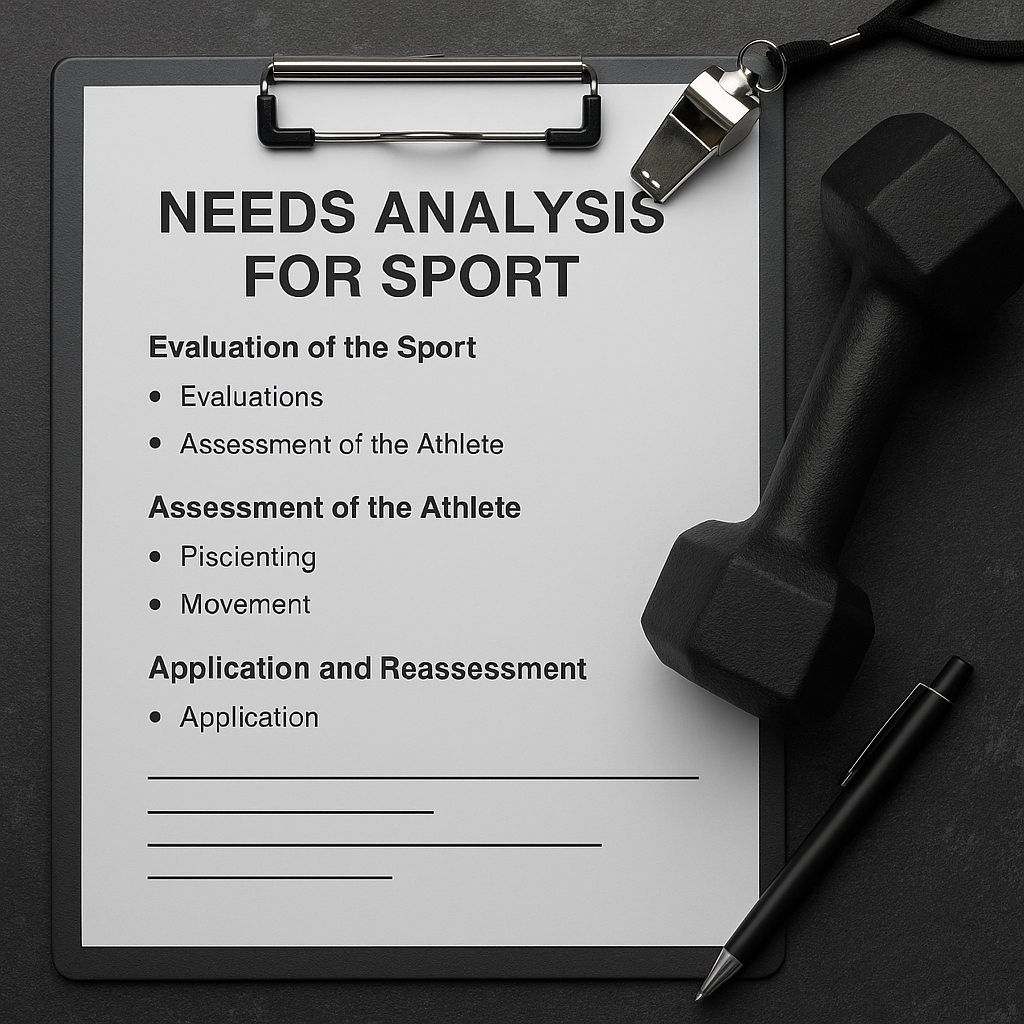The importance of the process of needs analysis for sport

Defining the Needs Analysis
Evaluation of the Sport
By quantifying these demands through time–motion analysis, GPS data, and performance metrics, coaches can determine which physical qualities should be prioritised, whether acceleration, strength endurance, or reactive power. This creates the blueprint for sport-specific training, ensuring transfer to competition performance (Jeffreys and Moody, 2016).
Assessment of the Athlete
This phase is not limited to physiological assessment—psychological readiness, recovery capacity, and positional demands must also be considered (Taylor et al., 2021). A holistic assessment acknowledges that sport performance is multifactorial, integrating physical, technical, tactical, and mental domains.
Application and Ongoing Reassessment
Reassessment is equally important. Regular re-testing allows coaches to evaluate whether the training is effective and adapt plans dynamically. This cyclical process aligns with the scientific method—hypothesis, intervention, observation, and refinement—ensuring continued relevance and efficacy (Turner, 2014).
Why It Matters
References
Bompa, T.O. and Buzzichelli, C. (2019) Periodization: Theory and Methodology of Training. 6th ed. Champaign, IL: Human Kinetics.
Comfort, P. and McMahon, J.J. (2015) ‘Strength and Conditioning for Athletic Performance’, Journal of Strength and Conditioning Research, 29(3), pp. 574–586. Available at: https://pubmed.ncbi.nlm.nih.gov/25607369/
Gabbett, T.J. (2016) ‘The training–injury prevention paradox: should athletes be training smarter and harder?’, British Journal of Sports Medicine, 50(5), pp. 273–280. Available at: https://bjsm.bmj.com/content/50/5/273
Haff, G.G. and Triplett, N.T. (eds) (2016) Essentials of Strength Training and Conditioning. 4th ed. Champaign, IL: Human Kinetics.
Harper, D.J. and Kiely, J. (2018) ‘Damaging nature of decelerations: asymmetry, braking, and performance implications’, International Journal of Sports Physiology and Performance, 13(9), pp. 1175–1183. Available at: https://pubmed.ncbi.nlm.nih.gov/29345564/
Jeffreys, I. and Moody, J. (eds) (2016) Strength and Conditioning for Sports Performance. London: Routledge.
Moir, G.L., Sands, W.A. and Stone, M.H. (2020) ‘The influence of strength on speed and power development’, Sports Medicine, 50(2), pp. 215–231. Available at: https://pubmed.ncbi.nlm.nih.gov/31828704/
Morin, J.B. and Samozino, P. (2016) ‘Interpreting power–force–velocity profiles for individualized and specific training’, International Journal of Sports Physiology and Performance, 11(2), pp. 267–272. Available at: https://pubmed.ncbi.nlm.nih.gov/26575114/
Stone, M.H., Stone, M. and Sands, W.A. (2007) Principles and Practice of Resistance Training. Champaign, IL: Human Kinetics.
Taylor, K.L. et al. (2021) ‘Monitoring athlete readiness and load management: a framework for S&C practitioners’, Strength and Conditioning Journal, 43(4), pp. 45–55. Available at: https://pubmed.ncbi.nlm.nih.gov/33528367/
Turner, A. (2014) ‘Strength and conditioning for soccer players’, Strength and Conditioning Journal, 36(4), pp. 1–13. Available at: https://pubmed.ncbi.nlm.nih.gov/25051154/